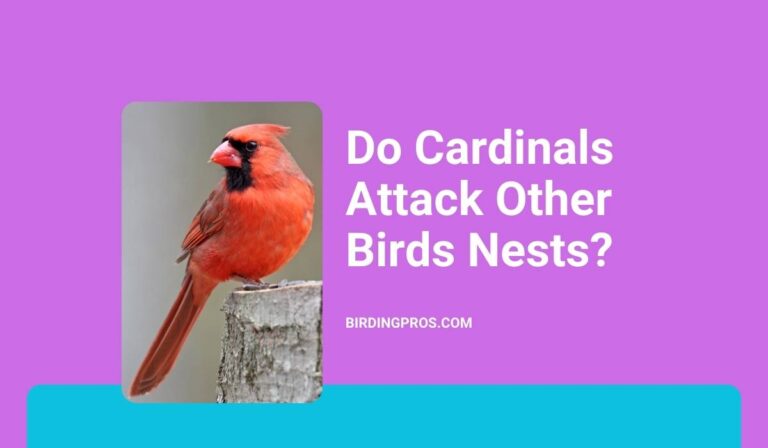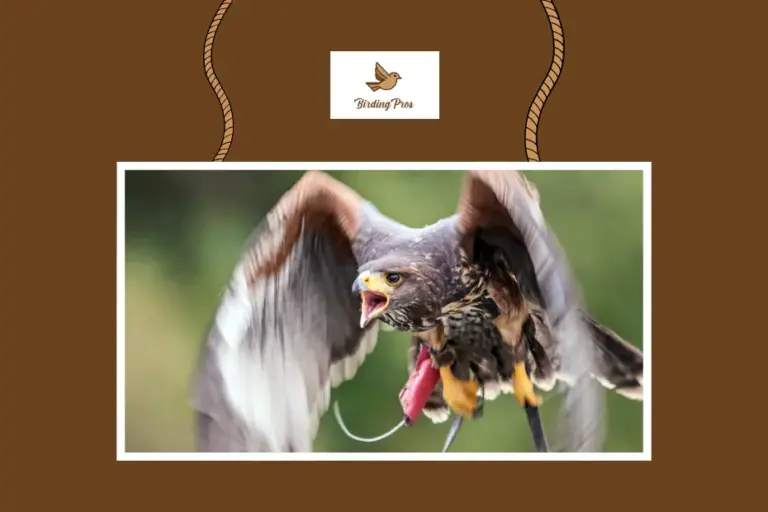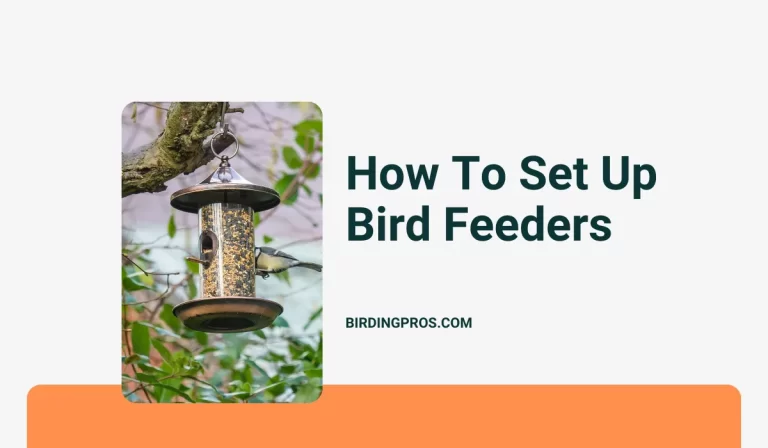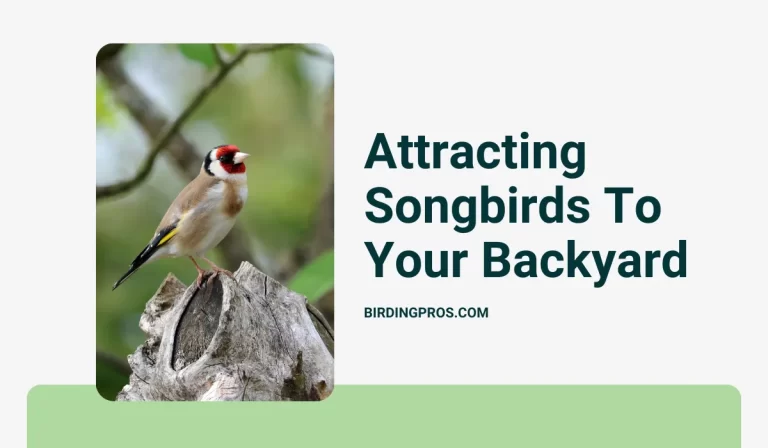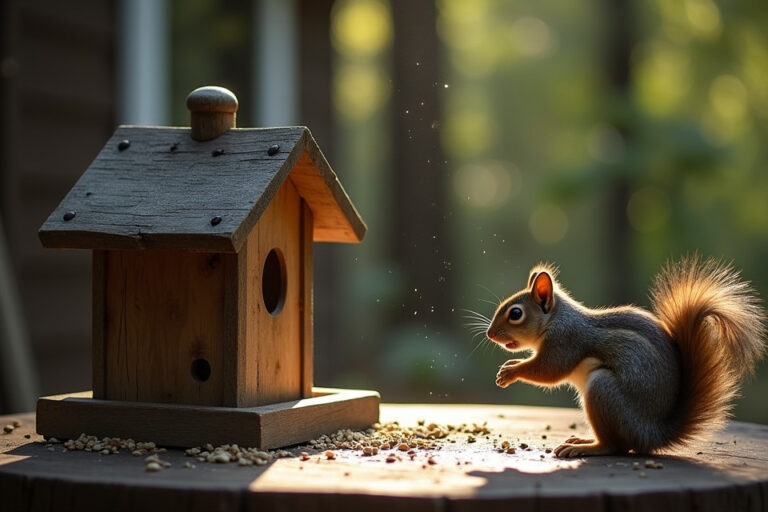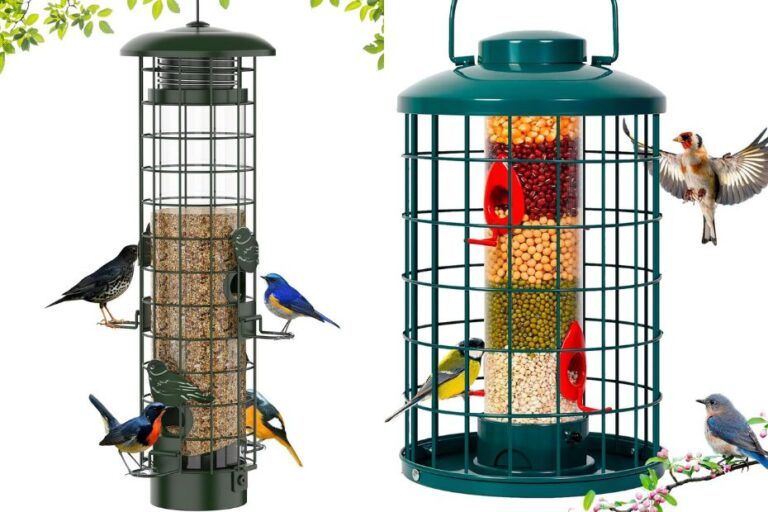Discover Colorado Backyard Birds: You Might Be Lucky to Spot
Colorado backyard birds include finches, robins, chickadees, and hummingbirds. Create a bird-friendly yard to attract these feathered friends year-round!
Bird Watching is like opening a surprise gift every morning, right in your backyard! How many times have you looked outside, coffee in hand, and spotted a robin hopping about or a flicker pecking at a tree trunk?
Colorado, with its diverse landscapes and vibrant bird species, offers one of the best front-row seats for witnessing nature. Whether you’re a seasoned birder or an accidental bird admirer, there’s always something new and delightful to discover.
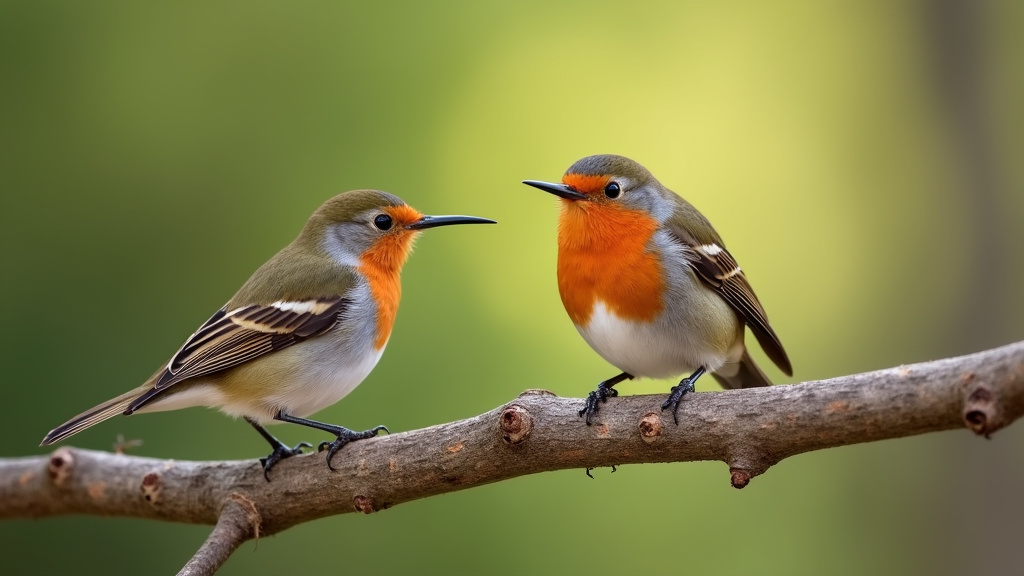
Why Colorado is a Birding Wonderland
What makes Colorado uniquely suited as a birding hotspot? It’s the geographic buffet of ecosystems, from the towering Rockies to open plains, that attracts both migratory and resident birds.
Plus, the state’s diverse seasons—everything from snowy winters to sunny summers—means you’ll see different birds all year round.
With many of these species finding shelter and food in suburban backyards, your lawn becomes part of their survival story. Isn’t it exciting to think your bird feeder or berry bushes could be a lifeline for these creatures?
- Factoid Alert! Did you know that over 500 bird species have been recorded in Colorado? That’s more species than some entire countries host! [Source: Colorado Bird Atlas Project]
Common Backyard Birds in Colorado You Need to Know About
If you’ve never gone birdwatching beyond your window, start with these 5 iconic species that frequently grace Colorado backyards. These birds are like the main characters of your backyard’s avian drama:
| Bird | What to Look For | Favorite Foods | Personality Traits |
|---|---|---|---|
| American Robin | Red-orange belly, melodic dawn song | Earthworms, fruit | Confident, early riser |
| House Finch | Males flaunt red-pink heads; females are brown | Sunflower seeds, berries | Friendly, loves feeders |
| Black-capped Chickadee | Black cap, cheerful “chick-a-dee-dee” call | Seed mixes, suet | Curious, acrobatic climber |
| Mourning Dove | Gentle cooing, light gray body | Millet, cracked corn | Ground feeder, peaceful demeanor |
| Dark-eyed Junco | Slate-gray top, white belly | Hulled sunflower seeds, millet | Flock-loving, winter visitor |
Did You Spot Them Yet?
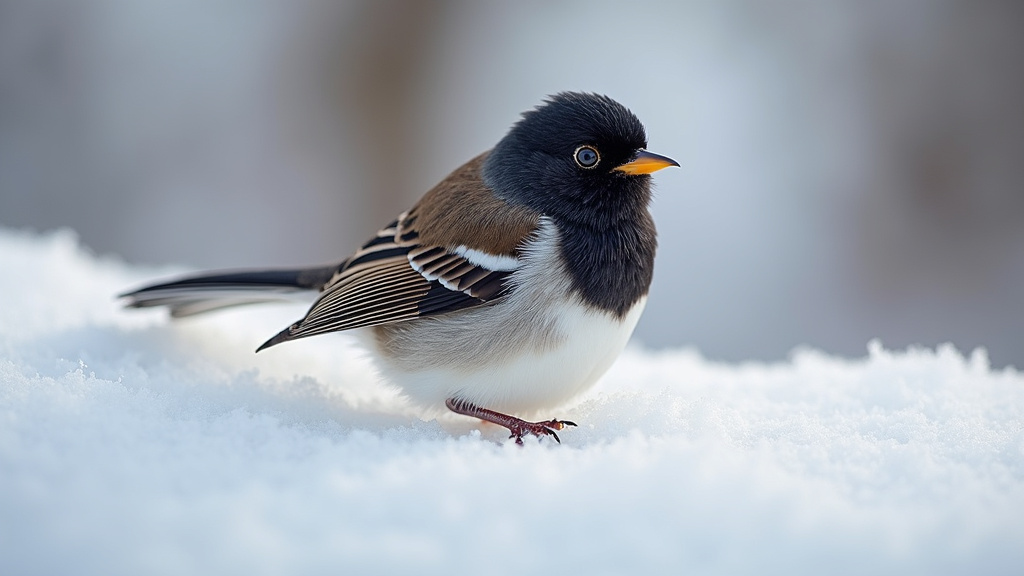
Ever notice a bird flitting around your snow-covered feeder and wonder who it was? The Dark-eyed Junco, fondly called “snowbirds,” visit Colorado mostly in the winter.
Alternatively, in summer, you’ll find American Goldfinches, their lemon-yellow feathers shimmering in the sun. The seasons bring new characters to the stage—just watch closely.
Here’s a handy trick to attract them: provide their favorite snacks based on the season. For instance, hanging a nyjer seed feeder is like sending out an exclusive invite to small fliers like goldfinches and siskins.
Spotlight on Seasonal Variations
Have you wondered why your backyard feels quieter in winter or busier in late spring? Seasonal bird migration transforms your feeders into Grand Central Station for feathered visitors.
What Happens When the Seasons Shift?
- Spring Migration (March-May): Expect dazzling appearances as flocks of migratory birds like warblers and grosbeaks stop over. Prepare your feeders with diverse options!
- Summer Residency (June-August): Nesting season begins. Species like the bold Steller’s Jay come out to charm the warmer months.
- Fall Rest Stops (September-November): Autumn migrants, such as the Cedar Waxwing, binge on berries before continuing south.
- Winter Favorites (December-February): Year-round residents like Chickadees and cold-hardy visitors, like the Pine Siskins, keep backyard watchers entertained. Snow-covered feeders never go unnoticed in their little world.
A Little Advice:
If your backyard “guest list” changes drastically with the arrival of cold weather, don’t worry—it’s natural. Instead, use winter as a time to shine with high-calorie foods like peanuts, suet, and sunflower seeds.
Tip Alert! Set up shrubbery in your backyard! Beyond food, birds seek shelter. Shrubs like sumac or juniper provide a cozy spot for protection—just like a snug sleeping bag.
Read More: Best 10 Foot Bird Feeder Poles for Bird Lovers
Relating to Their World
Does it blow your mind that some of these birds fly thousands of miles during migration? Imagine flapping your arms across continents!
The next time a flutter of wings lands in your yard, look at them with some admiration. They probably deserve a standing ovation (or maybe just another handful of sunflower seeds).
Creating a Backyard Haven for Colorado Birds
Imagine stepping into your backyard and feeling like you’re in a living aviary. The sounds of chirping mingling with the flutter of wings as finches, chickadees, and juncos visit your feeders—it’s like nature’s symphony just for you.
If that sounds like a dream, you’re in luck! Creating a haven for Colorado backyard birds isn’t hard, and with the right steps, you’ll have a yard buzzing with bird activity. Let’s dig in!
Build the Perfect Backyard Habitat
The secret to attracting birds is simple—meet their needs. Just like us, birds have basic requirements for food, water, shelter, and nesting. Once your yard offers all these, it becomes the ultimate bird B&B (Bird & Breakfast). But where do you start? Don’t worry—it’s a lot easier (and more fun) than it sounds.
1. Food, aka Backyard Buffets
Birds flock to food sources like we rush to brunch, and the key is offering the right menu. Not all birds enjoy the same meals, so diversity is vital. Here’s what you can provide:
- Seeds: Sunflower seeds are a universal favorite. Add millet for ground feeders like sparrows and mourning doves.
- Nectar: Attract hummingbirds and orioles with sugar-water feeders. Fun fact, did you know Colorado hosts several hummingbird species every summer?
- Fruits: Place halved oranges or apple slices to draw in orioles, robins, and waxwings.
- Suet: This calorie-rich food is a winter staple for woodpeckers and chickadees.
Quick Tip:
Store-bought seed mixes are great, but some contain fillers like red millet that many birds ignore. Opt for high-quality mixes to keep the flocks happy.
Popular Foods for Colorado Birds
| Bird | Favorite Foods | Feeder Type |
|---|---|---|
| House Finch | Black-oil sunflower seeds, nyjer | Tube feeders, platform feeders |
| Black-capped Chickadee | Suet, peanut hearts, sunflower seeds | Suet cages, small tube feeders |
| American Robin | Fruits like apples, oranges, mealworms | None (prefers foraging ground) |
| Hummingbirds | Nectar (4 parts water to 1 part sugar) | Nectar feeders |
| Woodpeckers | Suet, sunflower seeds, peanuts | Suet cages, large hopper |
2. Water Sources for Year-Round Attraction
How many times have you seen birds splashing in puddles after rain? Water is irresistible to birds, whether for drinking, bathing, or just cooling off.
Invest in a birdbath or even a simple shallow dish for starters. Want an edge? Add a water fountain or dripper—moving water catches their attention faster than static water.
Winter Hack: Use a heated birdbath to keep water available during freezing temperatures. Trust me, the winter birds (like juncos) will thank you for this VIP service.
3. Shelter & Safety
Birds need more than just food and water—they’re looking for safety. Create a yard full of sheltered spots, and they’ll feel safe sticking around.
- Trees: Native trees like juniper and spruce provide nesting spots and safe perches.
- Shrubs: Dense bushes like sumac or serviceberry act as natural hideouts.
- Birdhouses: Place species-specific birdhouses for cavity-nesting birds like bluebirds or chickadees.
Wondering where to place shelters? Always position them away from high-traffic areas and ensure they’re safe from predators (like cats!).
4. Planting Native Vegetation
If you’re serious about birdscaping, it’s time to go green! Native plants don’t just look pretty—they’re magnets for birds by providing natural food and shelter.
Must-Have Native Plants for Birds in Colorado:
- Trees: Pinyon pine, Rocky Mountain juniper, Gambel oak.
- Shrubs: Chokecherry, serviceberry, sumac.
- Flowers: Sunflowers, columbines, and black-eyed Susans.
These plants yield seeds, berries, and insects, forming a natural feast! Can you imagine how many goldfinches you’ll attract with sunflowers alone?
Personal Touch:
When I planted a chokecherry bush for the first time, I wasn’t sure what to expect. But one summer morning, I spotted a flock of Cedar Waxwings feasting on the berries—it felt like I’d won the birder’s lottery!
Read More: Introduction to African Savanna Birds
Tips for Attracting Specific Birds
Creating your dream avian haven also involves catering to particular species. Whether you’re obsessed with hummingbirds or fascinated by finches, here are some tailored strategies:
- Hummingbirds: Plant tubular blooms like trumpet vine and hang nectar feeders.
- Finches: Add nyjer seed feeders; they’re small enough to keep larger birds out.
- Woodpeckers: Hang suet cakes and don’t over-trim dead trees—they often nest in hollowed trunks.
- Songbirds: Scatter mixed seeds for a variety of sparrows, robins, and thrushes.
Want to go the extra mile? Avoid pesticides and herbicides in your garden. Healthier plants attract more insects, and more insects bring—you guessed it—more birds!
Making Your Yard Irresistible Year-Round
Some seasons require extra preparation to keep birds coming back. Here’s how you can adapt your bird sanctuary through Colorado’s distinct seasons:
- Spring: Clean old birdhouses and set up fresh feeders to welcome migratory birds.
- Summer: Opt for shade-loving feeders to protect guests under the scorching sun.
- Fall: Plant late-season berries like elderberry to keep your feathered visitors energized for migration.
- Winter: Provide high-energy food like peanuts, suet, and black-oil sunflower seeds when resources are scarce.
Remember that consistency is king. Once birds discover your yard, they’ll keep returning. If your feeder runs dry, they might move on, so aim to top it off regularly.
Why Colorado is a Magnet for Rare Bird Sightings
What’s the secret to Colorado’s rich diversity of rare and migratory birds? It’s the state’s geographic diversity, spanning from alpine tundra to grasslands.
Many birds use Colorado as a migratory stopover or even as a last-minute detour when straying from their usual routes. Lucky for bird enthusiasts, this means that spotting something extraordinary is always a possibility.
Plus, unpredictable weather patterns and seasonal shifts often bring visitors you wouldn’t normally see here. Like playing nature’s lottery, you never know when luck might strike!
- Did You Know? Rare birds often show up during spring and fall migration seasons when flocks pass through at their peak [Source: National Audubon Society].
Curious yet? Keep reading to meet some of Colorado’s rarest avian stars.
Colorado’s Rare and Unexpected Birds
If you’re someone who dreams of adding a rare species to your birding life list, Colorado is the perfect playground. Here are some of the rarest and most unexpected birds you might encounter:
1. Roseate Spoonbill
A tropical beauty with pink plumage and an unmistakable spoon-shaped bill, the Roseate Spoonbill is highly unusual in Colorado. Usually found in the southeastern U.S., this flashy bird occasionally strays here, wading through wetlands like a colorful elder statesman.
- Where to Spot Them:
Rare sightings are recorded in marshes or along flooded riverbanks. Keep an eye on local birdwatching forums during their migration season. - Fun Fact:
Their striking color comes from a diet rich in shrimp—talk about fancy eating habits!
2. Vermilion Flycatcher
If you thought “fireworks” were only reserved for the Fourth of July, wait until you see a Vermilion Flycatcher! Males boast a blazing red body with contrasting black wings, making them a showstopper. And the best part? This bird sometimes surprises lucky Coloradans by appearing far outside its desert range.
- Habitats:
Look for them in riparian woodlands (near water). They’re often noticed in southern parts of the state but are far from a common sight.
3. Whooping Crane
The Whooping Crane stands out not just for its towering size but also for its endangered status. These elegant birds occasionally pass through Colorado during migration, and glimpsing one is bound to make you feel like a conservation hero!
- Migration Stops:
Check wetlands like Monte Vista National Wildlife Refuge during spring and fall. Patience is your friend here. - Conservation Spotlight:
Once numbering in the low double digits, Whooping Cranes are making a comeback thanks to conservation efforts. Your sighting could be part of history in the making!
4. Painted Bunting
Described as a “flying rainbow,” the Painted Bunting is a feast for the eyes. This southern species isn’t a frequent visitor, but when it does pass through Colorado, birders from across the state flock to the area.
- Attraction Factors:
They’re drawn to areas with dense shrubbery—so your carefully curated garden might just score you an unexpected sighting! - Chart of Rare Birds in Colorado (Quick Reference)
| Bird | Distinctive Traits | Where to Look | Rarity Level |
|---|---|---|---|
| Roseate Spoonbill | Pink plumage, spoon-shaped bill | Wetlands, flooded rivers | Extremely Rare |
| Vermilion Flycatcher | Bright red body, black wings | Riparian woodlands | Rare |
| Whooping Crane | Tall stature, snowy white color with red head | National Wildlife Refuges | Very Rare |
| Painted Bunting | Multicolored feathers (red, blue, green) | Gardens, dense bushes | Rare |
5. Gyrfalcon
The mighty Gyrfalcon, a rare winter visitor, can send shivers down any birdwatcher’s spine! These Arctic hunters sometimes grace Colorado’s plains during particularly cold winters, chasing prey like waterfowl or rodents.
- Pro Birding Tip:
Look for them perched on fence posts or trees along open fields. Their sheer size makes them hard to miss—when they show up, that is!
6. Western Screech Owl
Though not flashy, spotting this tiny owl feels like discovering a well-hidden secret. With their perfect camouflage, they blend into trees during the day, emerging only at night. Rarer subspecies may sometimes be found in unexpected areas.
- When to Look:
Dusk and night are their active times, so walking outside with a flashlight could lead to a surprise encounter!
Read More: 6 Letter Bird Name Starting With T
How to Increase Your Chances of Spotting Rare Birds
Now that you know what to look for, it’s time to improve your odds. Here are some practical tips:
- Stay Connected: Join birdwatching groups or forums where birders post updates on rare sightings (eBird is a great resource!).
- Equip Yourself: Bring binoculars, a field guide, and a notebook. Spotting rare birds takes skill, and having the right gear helps.
- Know the Seasons: Spring and fall migrations are when you’re likely to see rare transients. Keep feeders full and water accessible.
- Be Patient: Rare sightings often require persistence. Spend time at birding hotspots and be prepared to wait—or return often.
To Travel, or Not to Travel
While backyard birding is a delight, Colorado offers incredible locations for more ambitious birders. Consider checking out sanctuaries like the Monte Vista National Wildlife Refuge or Barr Lake State Park for an unforgettable birding adventure.
Here’s an idea for the family—turn birdwatching into a mini road trip! Who knows what surprises you’ll spot along the way?
Final Thought
Today, it might just be sparrows and finches foraging at your feeder. But tomorrow? Well, there could be a Painted Bunting sitting on your fence, turning your yard into something magical. And isn’t that the beauty of birdwatching? You never know what wonders the day might bring.
Now, go grab your binoculars and see if you can spot a Vermilion Flycatcher or maybe even a Whooping Crane. Happy birding!

